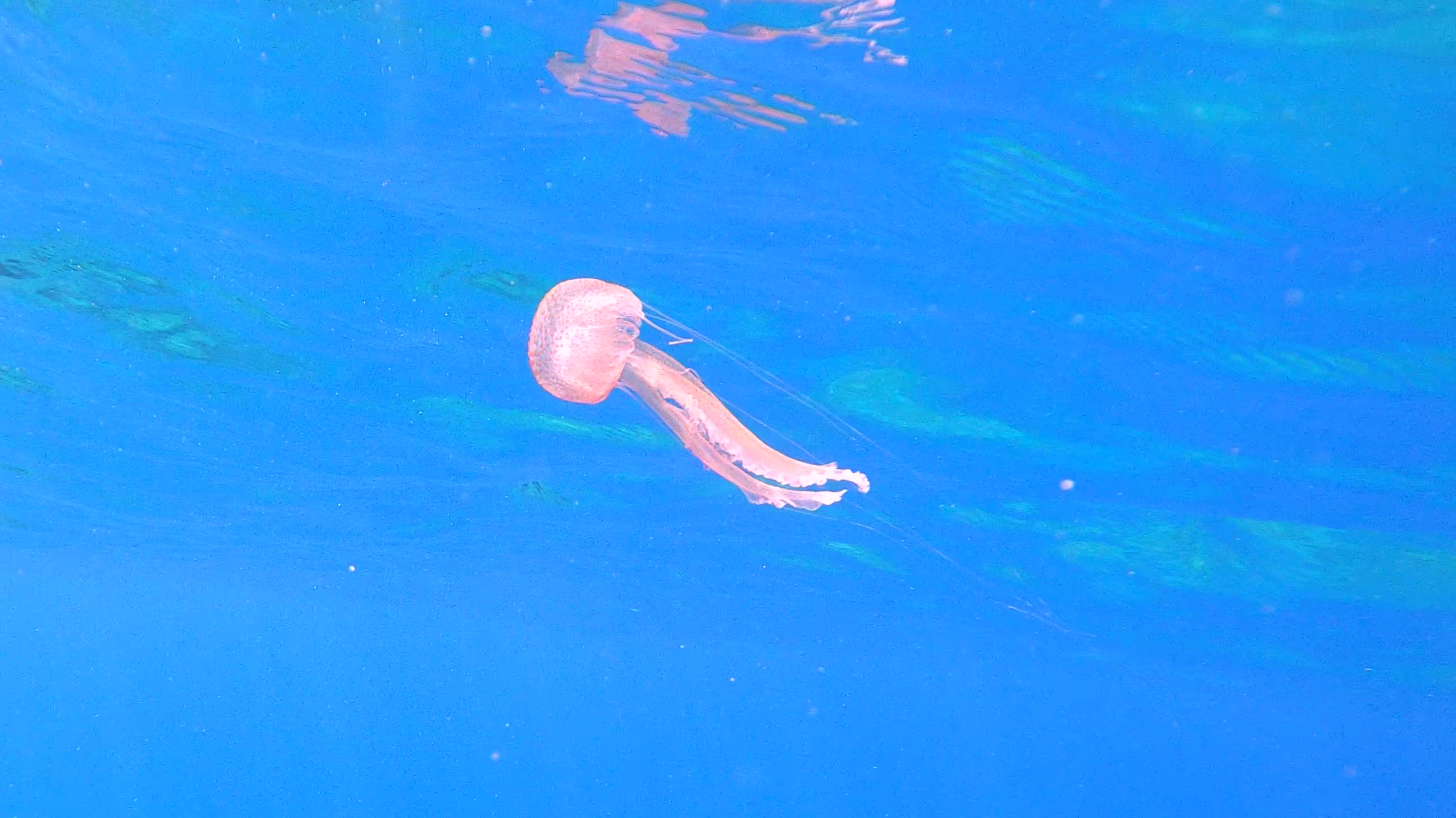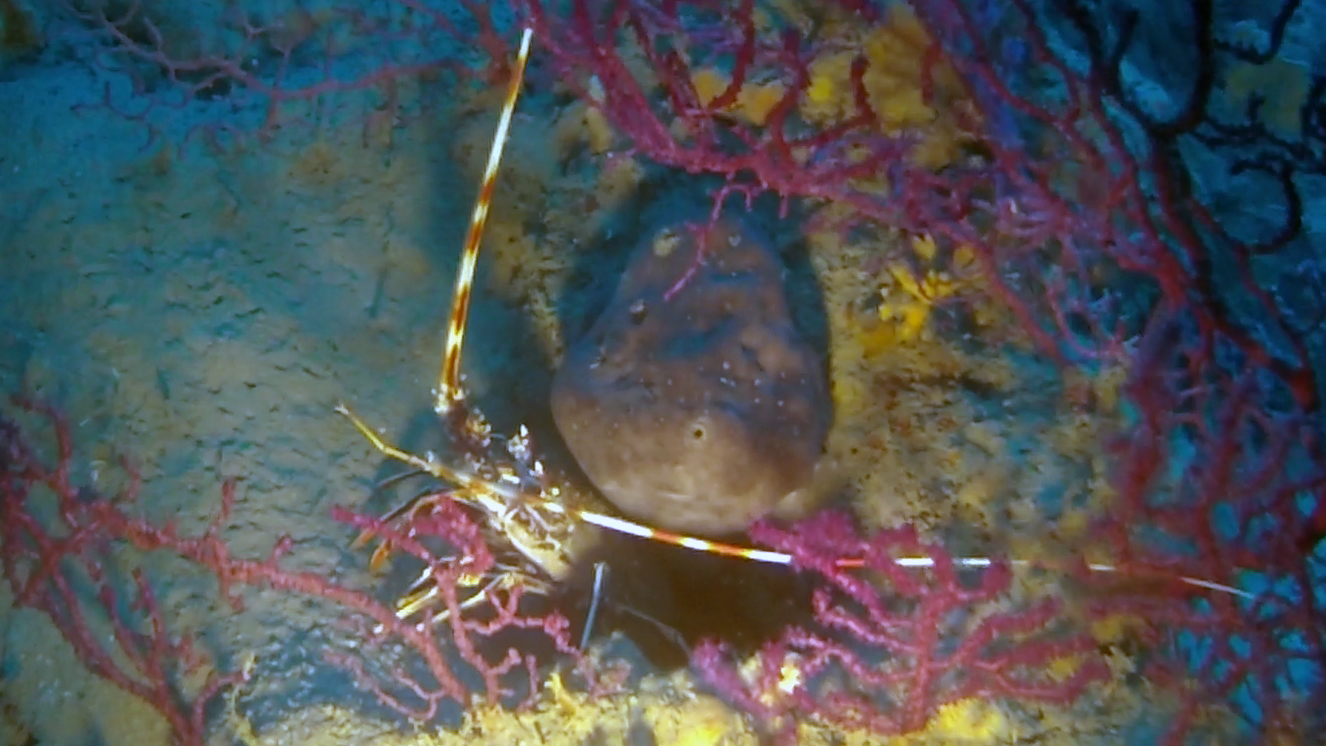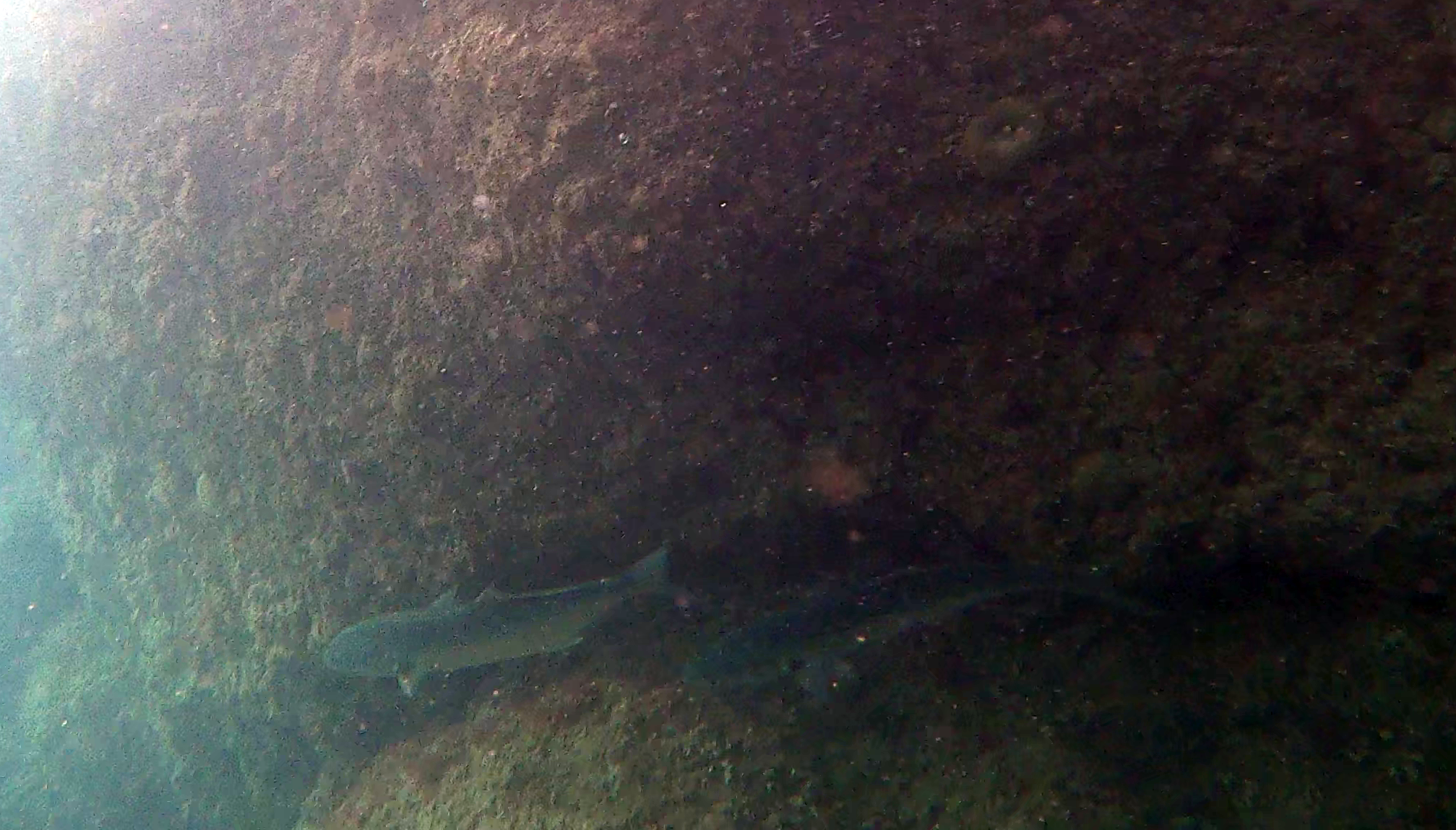Pelagia noctiluca, commonly known as glowing jellyfish, jellyfish is one of pelagiidae family. Pelagia noctiluca medusa luminosa famiglia Pelagiidae
Pelagia noctiluca, in English has many names: Mauve stinger, Purple-striped jelly, Purple stinger, Purple people eater, Purple jellyfish, Luminous jellyfish, Night-light jellyfish, some even quite alarming (Purple people eater) .
Distribution and habitat
It is common in the Mediterranean and eastern Atlantic to the North Sea; It was mentioned in the chronicles (in 1992, 2003 and 2005) for its abundance in our seas in some periods and for painful irritation it causes when touched.
It is a pelagic species, but in the autumn and spring approaches the coast.
Description
brown-pink or pink-violet umbrella of about 10 centimeters in diameter, translucent, consisting of 16 lobes from which 8 long retractile tentacles, very stinging and semi-transparent, starting from the edges and can be extended up to 2 meters. The oral arms, of the same color umbrella, are long up to about 30 centimeters. Pelagia noctiluca medusa luminosa famiglia Pelagiidae
The specific epithet is derived from brightness green color when this jellyfish is stimulated.
Biology Supply
It feeds on plankton and small fish that capture via the tentacles with stinging nematocysts.
Reproduction
P. noctiluca is a jellyfish that do not cross the stage polypoid during maturation. Adults are separate sexes: the female lays the eggs in the sea, which are fertilized by the male sperm. The zygote is born planula, a larva with lashes for movement and that is dispersed in planktonic level. It does not, however, passes through the scifistoma stage, anchored to the ground, but is divided directly into efira, a young jellyfish which then grow to form the adult jellyfish.
Gallery
Video Gallery
 English
English Italiano
Italiano






Sardegna, meduse luminosa spiaggiate ad Alghero:
https://www.si24.it/2019/01/09/sardegna-migliaia-di-meduse-spiaggiate-ad-alghero/